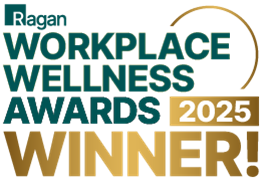
The green energy industry is one of the fastest growing sectors in the US and around the globe. From solar panels and wind turbines to electric vehicles, clean energy accounted for 10% of GDP growth globally in 2023, according to the International Energy Agency.
This growth was partly fuelled by the Inflation Reduction Act that set aside billions of dollars for clean energy projects. This in turn creates jobs for technicians, construction workers, engineers and supply chain specialists, and also fuels the growth of other industries, such as construction. The construction industry is also in high demand, especially when it comes to building manufacturing facilities.
In this context, the careful planning and successful execution of complex, capital-intensive ventures are vital. Part of that planning from a financial perspective could be done with a project financing model, detailing the potential of the project and the investment opportunity it represents, as well as carefully modelling the financing structure.
Funding for large infrastructure projects typically comes from a mix of government and private sources. Governments fund infrastructure projects for the functioning of the economy, and to contribute to business growth and efficiency, as well as job creation.
The private sector, on the other hand, invests in infrastructure based on several criteria: (1) a compelling business case, including strategic alignment, (2) a feasible investment amount, (3) a clear and simple funding model (operational revenues), (4) a compelling return on investment, and (5) an acceptable level of risk.
A carefully laid out project finance model is essential in assessing the feasibility and risks associated with a project. Unfortunately, unlike many other areas of finance, like accounting audits, there is no recognized set of standards applicable to financial modelling. As a result, the industry is awash with both great and terrible models. Based on our near decade of client experience in the infrastructure space, we’ve curated a list of five must-have features for a solid project financial model.
![]() Organized Model Structure
Organized Model Structure
First, the financial model should be neatly structured, and thus able to tell a story quickly and straightforwardly. Yes, the model is a collection of complicated calculations, often spread across many tabs. But if a veteran financial modeller or even project developer can’t open it and quickly understand the story – revenues, costs, returns – then the model could be faulty in one of two ways: (a) it’s poorly structured down to its guts, and should be completely rebuilt; or (b) a strong technical person built it, but someone more senior should work with them to ensure that executive-level audiences can thoroughly understand the good work that is currently a bit “clunky” to grasp.
“Remember that modelling is where industry expertise meets financial expertise. So, it has to be accessible to both types of experts.”
![]() Thoroughly Documented Inputs
Thoroughly Documented Inputs
Second, the model should have nicely documented inputs. These could use footnotes, references on another tab, links or anything else. Unlike with, say, a startup financial model, the revenues and costs for a renewable industry project tend to be well-known in advance, so should be appropriately researched. Yes, there could be an “error bar” around the number, but most veterans in the space will quickly be able to validate whether an assumption sounds reasonable or unreasonable. Having well-documented inputs is all-the-more important for project modelling, since the returns tend to be low. As a result, if an input is wildly off, it can easily overstate returns, often significantly. Obviously, it’s a big problem if a money-losing project is approved on the basis of poor modelling.
![]() 3-Statement Financial Model
3-Statement Financial Model
Third, project models need to have full financial statements. We regularly see such models with revenue less expenses, and little else; that number is then directly plugged into the key metrics (Net Present Value or “NPV”, and Internal Rate of Return, or “IRR”). The issue is that many projects have significant working capital – things like accounts receivable, which slow receipt of revenues, or sinking funds, which are inaccessible moneys set against future debt payments. Moreover, these models often get to “free cash flow to the firm” (FCFF), which is a metric which excludes debt financing. Calculating the “unlevered IRR” that corresponds to FCFF is fine and indeed needed, but the debt financing is still a critical decisionmaking point. After all, debt drains away cash flow that can otherwise pay equity investors, and more importantly, poor cash flows can lead to debt covenant breaches.
![]() Line of Credit Calculation
Line of Credit Calculation
That leads to a fourth requirement: the model needs to properly calculate a line of credit. Many financial models just have cash turn negative when it runs out. Technically, that’s correct in a way; however, it makes an implicit assumption that there is a lender who will finance that shortfall, and moreover, that that lender will do it interest-free. As we all know, nothing in life is free! So, a line of credit is critical in both (correctly) exacerbating the financials of the company with the burden of interest, as well as providing a way of benchmarking whether expected line of credit availability is sufficient to get the project through financial rough patches.
![]() Streamlined Scenario Testing
Streamlined Scenario Testing
Fifth and finally, project models need to make running different scenarios effortless. Running scenarios means being able to change inputs (say, related to revenues and costs) and to quickly see the output on the key metrics (IRR, NPV, maximum line of credit draw, etc.). This ties into the comment above about documenting inputs: maybe some of them are weak, or maybe there is a large band of uncertainty around the right value (for instance, whether utilization of the asset is 60% or 80%, thus directly affecting revenues). Running scenarios will provide comfort that the project still stands up even if some of the outputs trend towards the outside end of acceptable (or not, and the project can be reworked or shelved before money is wasted). This scenario analysis is only helpful, though, to the extent that we have full financial statements, and a proper line of credit. Often, we see models with weaker inputs result in a “death spiral”, where line of credit interest leads to more borrowing on the line of credit, with no hope of reversal. With the full financials and line of credit, we get a truthful picture on how robust the project is against negative surprises on the development or subsequent operations.
We hope you’ve found this list of project model best practices helpful. If you have others, please let us know. And if you’d like assistance in building a project model or reviewing an existing model, feel free to reach out – and rest assured that we abide by these practices!




